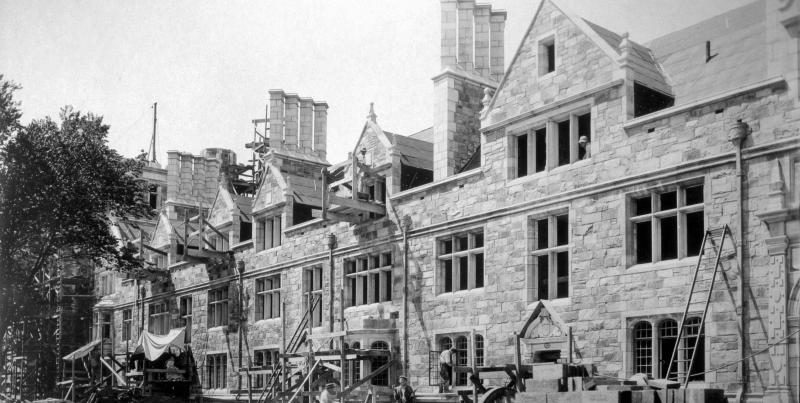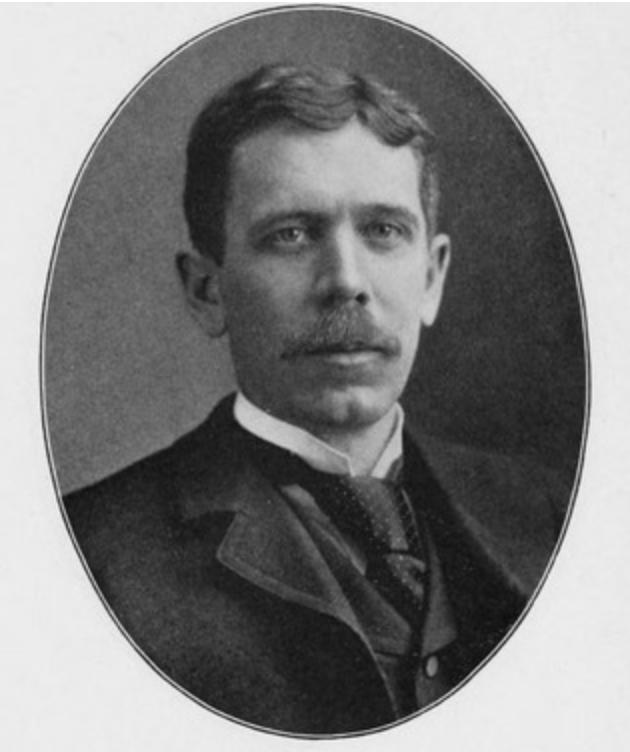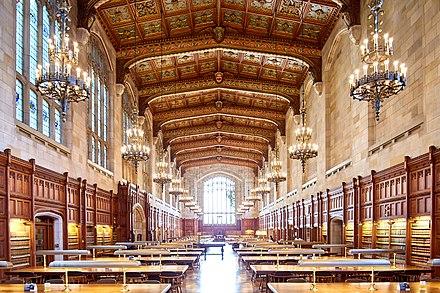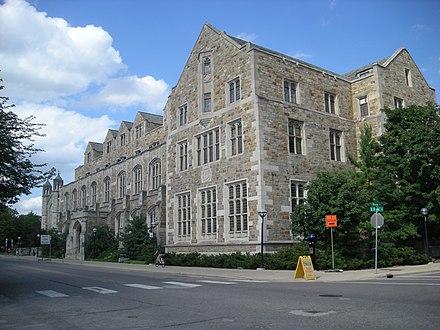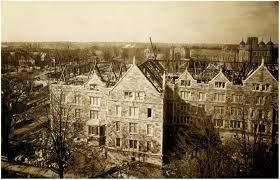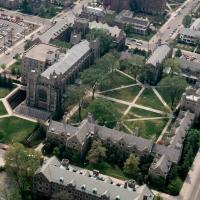-
Name of property current (historical)
-
University of Michigan Law Quadrangle
-
Entry author
-
Zariah Hernandez
-
Abstract
-
The University of Michigan Law Quadrangle is a prestigious and iconic complex located in Ann Arbor, Michigan, gifted to the university by philanthropist William W. Cook in the early 20th century. It serves as the home of the University of Michigan Law School and has significant historical and architectural significance. The Law Quadrangle features a Collegiate Gothic architectural style. And is loved for its stunning courtyards, grand archways, and beautiful landscaping. The University of Michigan Law Quadrangle stands as a cherished institution with a rich history, embodying the spirit of philanthropy and the pursuit of legal knowledge.
-
Address
-
625 S State St, Ann Arbor, MI 48109
-
Architect
-
The Quad was designed by New York architects Edward Sawyer and Philip York
-
Date (comission)
-
Early 1920s
-
Date (completion)
-
1933
-
Program/ function
-
The University of Michigan Law Quadrangle is facility for the University of Michigan Law School. This space provides eduction and training for students. Housing various resources for the success of legal eduction such as classrooms, offices, libraries, moot courtrooms, and other academic spaces.
-
Contractor
-
The Quad was overseen by numerous contractors, as it was built in multiple stages over several years.
-
Date (modification, adaptation, renovation)
-
The University of Michigan Law Quadrangle has undergone several important renovations and updates over the years. One notable renovation took place in 2012 when South Hall, one of the buildings in the Law Quadrangle, was updated with modern classrooms, seminar rooms, offices, and a new library to enhance the educational experience for students. Additionally, the Legal Research Library underwent renovations in the late 1990s to modernize its facilities and improve access to legal research resources. Efforts have also been made to restore and preserve the exterior of the Law Quadrangle buildings, including repairs to masonry, roofs, and other architectural elements. These renovations aim to provide modern facilities while preserving the Law Quadrangle's historical significance.
-
Style/ distinct features/ cultural reference
-
Some featured elements in the Quad are pointed arches, ribbed vaults, decorative carvings, limestone, stained glass windows, and detailed ornamentation. These are features of Collegiate Gothic style.
-
Gift giver/ funder/ contributor
-
William W. Cook was a lawyer, financier, philanthropist, and the gift giver of the Law Quadrangle. Cook graduated from the University of Michigan in 1880 and went on to practice law in New York City where would lead to his successful legal career as he became known for his expertise in corporate law and finance.
-
Beneficiaries and impact on the community
-
The beneficiaries of the University of Michigan Law Quadrangle are primarily the students, faculty, and staff of the University of Michigan Law School. Additionally, alumni, visitors, and the legal community at large also benefit from the Law Quad as a center for legal research, education, and scholarship.
-
Was it part of a network of buildings?
-
The Law Quad has buildings arranged around a central courtyard, creating a quadrangle. The buildings within the Law Quadrangle include Hutchins Hall, the Legal Research Building, and the John P. Cook Dormitory, among others.
-
Sustainability (financial, cultural)
-
The University of Michigan Law Quadrangle is owned by the University of Michigan and is part of the university's Law School campus. There has been no change of ownership for the Law Quadrangle itself.
-
Size/ scale
-
The total size of the Law Quadrangle is approximately 225,000 square feet (20,900 square meters).
-
Q1: What were the motivations of the gift-giver and the implications of the gift for the community ?
-
William W. Cook motivations for gifting the University of Michigan Law Quadrangle were multifaceted. As an alumnus of the University of Michigan Law School, Cook had a personal connection to the university and wanted to give back to his alma mater. He was also passionate about the field of law and believed in the importance of legal education in preparing future generations of legal professionals. He also wanted to advance legal education by providing state-of-the-art facilities for teaching, research, and collaboration, and to create a lasting legacy that would benefit students and scholars for generations to come. Additionally, Cook's philanthropic values and generosity drove his desire to support educational institutions, including the University of Michigan, Harvard University, and Yale University, and promote his vision for advancing the field of law.
-
Q2: Was there an imposed sense of responsibility or reciprocation in the case study, and who were the parties that were charged with these actions?
-
It can be inferred that there may have been a sense of reciprocation from the university and its community towards William W. Cook for his generous gift. Given that the gift had a transformative impact on the university's law school by contributing to the growth and development of the university's law program, enhancing its reputation and attracting talented faculty and students. However, there was no evident sense of responsibility or reciprocation.
-
Bibliography
-
Holdship, Deborah. “He Never Saw the Law Quad.” Michigan Today, December 10, 2018.https://michigantoday.umich.edu/2018/11/27/he-never-saw-the-law-quad/.
Horste, Kathryn. The Michigan Law Quadrangle: Architecture and Origins. Michigan: The University of Michigan Press, 1997.
Tobin, James. “The Law School Goes Under.” University of Michigan Heritage Project. Accessed April 26, 2023. https://heritage.umich.edu/stories/the-law-school-goes-under/#:~:text=The%20Quad%20had%20been%20designed,gifts%20paid%20for%20it%20all.
